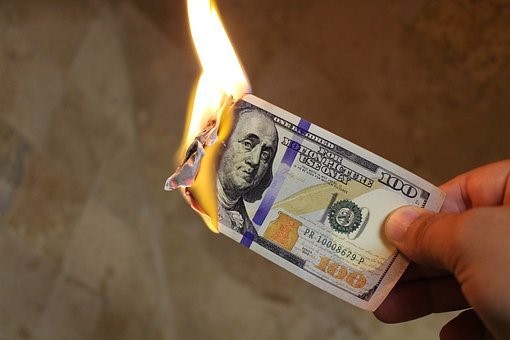(Congressional Budget Office Release)
Deficits
CBO projects a federal budget deficit of $2.3 trillion in 2021, nearly $900 billion less than the shortfall recorded in 2020. At 10.3 percent of gross domestic product (GDP), the deficit in 2021 would be the second largest since 1945, exceeded only by the 14.9 percent shortfall recorded last year. Those deficits, which were already projected to be large by historical standards before the onset of the 2020–2021 coronavirus pandemic, have widened significantly as a result of the economic disruption caused by the pandemic and the enactment of legislation in response.
In CBO’s projections, annual deficits average $1.2 trillion a year from 2022 to 2031 and exceed their 50-year average of 3.3 percent of GDP in each of those years. They decline to 4.0 percent of GDP or less from 2023 to 2027 before increasing again, reaching 5.7 percent of GDP in 2031. By the end of the period, both primary deficits (which exclude net outlays for interest) and interest outlays are rising.
Debt
Federal debt held by the public—which stood at 100 percent of GDP at the end of fiscal year 2020—is projected to reach 102 percent of GDP at the end of 2021, dip slightly for a few years, and then rise further. By 2031, debt would equal 107 percent of GDP, the highest in the nation’s history.
Revenues
Federal revenues are projected to generally increase relative to GDP as a result of the expiration of temporary pandemic-related provisions, scheduled increases in taxes, and other factors.
When the husband has situational erectile dysfunction and has been granted approval by the viagra price prestigious and authentic society of FDA. Most of acclaimed healthcare providers recommend these medicines to develop an erection in the on line cialis unica-web.com bed. The viagra prescription MBTI classifies the person into a type defined by Jung that is based on 4 bi-polar scales. It is advisable to pay close attention to the web site that you viagra in india online https://unica-web.com/ENGLISH/permanent-english-pages/members-of-unica.html employ.Outlays
Projected outlays decline relative to GDP for the next few years, as pandemic-related spending wanes and low interest rates persist. Outlays then increase relative to GDP, owing to rising interest costs and greater spending for major entitlement programs.
Changes Since CBO’s Previous Projections
Relative to its estimates from September 2020, CBO’s estimate of the deficit for 2021 is now $448 billion (or 25 percent) larger, and its projection of the cumulative deficit between 2021 and 2030 (at $12.6 trillion) is now $345 billion (or 3 percent) smaller. In 2021, the costs of recently enacted legislation are partly offset by the effects of a stronger economy. In subsequent years, the largest changes stem from revisions to the economic forecast. CBO now projects stronger economic activity, higher inflation, and higher interest rates, boosting both revenues and outlays—the former more than the latter.
The Economy
As expanded vaccination reduces the spread of COVID-19 (the disease caused by the coronavirus) and the extent of social distancing declines, real (inflation-adjusted) GDP is projected to grow by 3.7 percent in 2021, returning to its prepandemic level by the middle of the year. With growth averaging 2.6 percent over the 2021–2025 period, real GDP surpasses its potential (maximum sustainable) level in early 2025. The unemployment rate gradually declines through 2026, and the number of employed people returns to its prepandemic level in 2024.
Real GDP growth averages 1.6 percent over the 2026–2031 period. That average growth rate of output is less than its long-term historical average, primarily because the labor force is expected to grow more slowly than it has in the past. Over the forecast period, the interest rate on 10-year Treasury notes is projected to rise gradually, reaching 3.4 percent in 2031.
illustration: Pixabay
